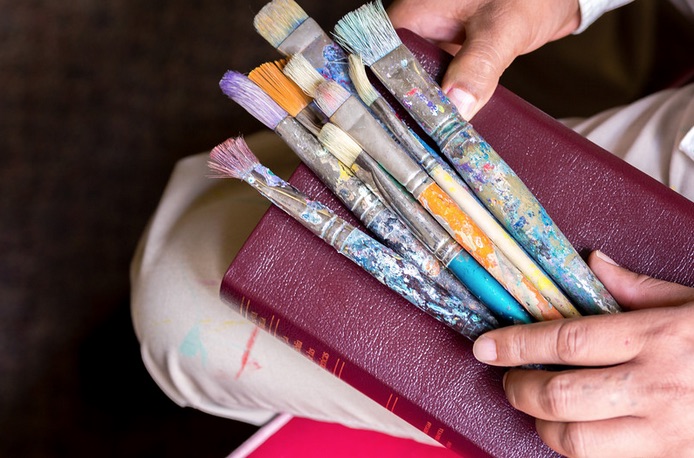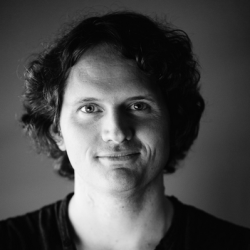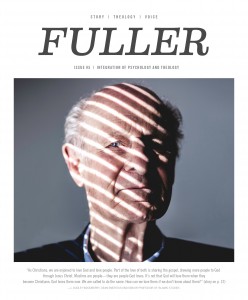
Bible and paintbrushes do not usually go together within Latina evangelicalism—unless, of course, we visit a church with an outreach to gang members or pay a visit to “el cuarto de los jóvenes” (youth ministry room) in a Hispanic church that owns its facilities. Christian art in them form of painting and literature is yet to be discovered as a gift to evangelical faith in the Latino church. Latino culture, on them other hand, is overwhelmingly artistic, visual, ever creative, and diversified. This seems to be a contradiction, and it is.
Conservative Protestant mission efforts targeted Latina art across the Americas (Latin America and the US) as something to be converted from, as satanic products of culture. Nearly all forms of art were reduced to singing hymns and playing classical instruments. A continent made of Native, African, Arabic, and European artistic traditions would certainly react to this Protestant denial of cultural beauty, and so a few local Protestant expressions—especially Pentecostalism—have opened ways to gradually experience what the Latino theologian Alejandro García-Rivera called “the community of the beautiful.” The denial of beauty to the Latina Christian community is something that we, as educators, theologians, and pastors, have to cope with and rectify. “It is a Beauty that is subversive yet gracious, ever hoping and fresh, [that] crosses barriers and creates community,” García-Rivera writes. “Beauty’s call [makes] possible the impossible and [makes] visible the invisible. Beauty [can] cross differences made long ago. Indeed, Beauty loves difference” (The Community of the Beautiful, p.3). God, beauty, and the beauty of God that we have come to know through other theologians and artists have yet to be discovered in Latina culture. García-Rivera points to an evident canvas, popular religion, where faith happens without much formal and Western regulation.
 At Fuller Seminary’s Center for the Study of Hispanic Church and Community, we have embraced Humberto Rebollo’s art as a beautiful gift of God and a gift of and to our Latino culture. In Humberto’s paintings and murals, beauty crosses enormous barriers and violent borders by blending inspiration from Latino artists—Diego Rivera and Picasso—and modern abstract art. And yet all of these expressions of beauty find a path in Humberto’s biblical and evangelical imagination. Stunningly, his visual faith is bringing beauty into church ministry—the very thing our Protestant ancestors felt afraid of and thought impossible to achieve. “Beauty makes possible the impossible and visible the invisible,” just as García-Rivera has said.
At Fuller Seminary’s Center for the Study of Hispanic Church and Community, we have embraced Humberto Rebollo’s art as a beautiful gift of God and a gift of and to our Latino culture. In Humberto’s paintings and murals, beauty crosses enormous barriers and violent borders by blending inspiration from Latino artists—Diego Rivera and Picasso—and modern abstract art. And yet all of these expressions of beauty find a path in Humberto’s biblical and evangelical imagination. Stunningly, his visual faith is bringing beauty into church ministry—the very thing our Protestant ancestors felt afraid of and thought impossible to achieve. “Beauty makes possible the impossible and visible the invisible,” just as García-Rivera has said.
EL BELLO MINISTERIO DE REBOLLO

La Biblia y los pinceles no van generalmente de la mano dentro del evangelicalismo latino–a menos que, por supuesto, visitáramos una iglesia que convoque a los miembros de una ‘pandilla’ o visitáramos el cuarto de los jóvenes en una iglesia hispana que sea dueña de sus instalaciones. El arte Cristiano en forma de pintura y literatura aún está por descubrirse como un regalo a la fe evangélica en la iglesia latina. La cultura latina, por otro lado, es sobrecogedoramente artística, visual, también creativa, y diversificada. Esto parece ser una contradicción, y lo es. La misión conservadora Protestante se esforzó por apuntar contra el arte latino a lo largo de las Américas (América Latina y los Estados Unidos) como algo del cual uno debe apartarse, como si fuera un producto satánico de la cultura. Casi todas las formas de arte fueron reducidas a himnos y a utilizar instrumentos clásicos. Un continente hecho de tradiciones artísticas nativas, africanas, árabes y europeas seguramente reaccionaría a esta negación Protestante de belleza cultural, y así fue que unas pocas expresiones locales Protestantes –especialmente las Pentecostales- han abierto maneras de incorporar gradualmente lo que el teólogo latino Alejandro García-Rivera denominó “la comunidad de lo
bello”.
La negación de la belleza en la comunidad latina Cristiana es algo que nosotros, como educadores, teólogos y pastores, debemos abordar y rectificar. “Es una belleza que es subversiva y al mismo tiempo que posee gracia, siempre con esperanza y frescura, que cruza barreras y crea comunidad,” escribe García-Rivera. “El llamado de la belleza [hace] posible lo imposible y [hace] visible lo invisible. La belleza [puede] cruzar diferencias que fueron creadas hace mucho tiempo. En efecto, la belleza ama las diferencias (La comunidad de lo bello, p.3).” Dios, la belleza, y la belleza de Dios que hemos llegado a conocer a través de otros teólogos y artistas, aún no se han manifestado en la cultura latina. García-Rivera habla de una pintura evidente, una religión popular, donde la fe existe sin acarrear con demasiados formalismos propios de las normas occidentales.
 En el Centro para el Estudio de la Iglesia y Comunidad Hispana del Seminario Fuller, hemos adoptado el arte de Humberto Rebollo como un bello regalo de Dios y como un regalo de y para nuestra cultura latina. En las pinturas y murales de Humberto, la belleza cruza barreras enormes y fronteras violentas, al combinar inspiración de artistas latinos –Diego Rivera y Picasso- con arte moderno abstracto. Y, sin embargo, todas estas expresiones de belleza encuentran un camino en la imaginación bíblica y evangélica de Humberto. Sorprendentemente, su fe visual está aportando belleza al ministerio de la iglesia -precisamente lo que nuestros antepasados Protestantes temían y pensaban que era imposible de lograr. “La belleza hace posible lo imposible y visible lo invisible,” justo lo que ha expresado García–Rivera.
En el Centro para el Estudio de la Iglesia y Comunidad Hispana del Seminario Fuller, hemos adoptado el arte de Humberto Rebollo como un bello regalo de Dios y como un regalo de y para nuestra cultura latina. En las pinturas y murales de Humberto, la belleza cruza barreras enormes y fronteras violentas, al combinar inspiración de artistas latinos –Diego Rivera y Picasso- con arte moderno abstracto. Y, sin embargo, todas estas expresiones de belleza encuentran un camino en la imaginación bíblica y evangélica de Humberto. Sorprendentemente, su fe visual está aportando belleza al ministerio de la iglesia -precisamente lo que nuestros antepasados Protestantes temían y pensaban que era imposible de lograr. “La belleza hace posible lo imposible y visible lo invisible,” justo lo que ha expresado García–Rivera.
REBOLLO의 아름다운 사역

라틴 문화의 복음주의 틀 안에서 성경책과 그림붓을 함께 연상하기란 쉬운 일이 아닙니다. 물론 갱단의 일원들에게 가까이 다가가고자 하는 교회에 가본다거나, 라틴계 회 내 청년부실(“el cuarto de los jóvenes”)의 문을 열어본다면 이야기는 달라 질 수 습니다. 하지만 대체로 미술이나 문학 작품 형태의 기독교 예술개념을 라틴 교회가 지고 있는 복음주의 신앙 고백에서 발견하기란 아직 어려운 것이 사실입니다. 이 점은, 라틴 문화가 가진 시각적 예술성과 그 창조적이며 다양한 성격을 생각해봤을 때, 이해하기가 힘든 모순으로 여겨집니다.
보수적 성향의 개신교 선교운동은 라틴 예술을 마치 사탄적인 세상 문화의 부산물인 것처럼 간주하였기에 북남미 대륙 전역(남미와 미국)에 걸쳐 복음주의 내에서 라틴 예술의 흐름을 끊어버리고자 한 시도가 있었던 것이 사실입니다. 라틴 예술의 표현 가 한 형태라고는 한 때, 찬송을 부르거나 클래식 악기를 연주하는 경우를 제외하고는 거의 찾아볼 수가 없었을 정도였습니다. 그러나 원주민 고유의 전통, 또한 아프리카, 아랍, 유럽 문화의 예술적 전통이 어우러져 나타난 미학적 역사를 부인하였던 당시 선교운동은 북남미 전역에서 적지 않은 반발을 불러일으키게 되었고, 곧 몇몇 다른 개신교인들, 지역적 교파들 (특히 오순절교단) 로부터 점진적으로 라틴 예술을 포용하고자하는 움직임이 나타나기에 이릅니다. 라틴 신학자 Alejandro García-Rivera는 라틴 예술이 살아 움직이는 총체를 “아름다움의 공동체‘라고 일컬은 바 있습니다. 바로 이 ”아름다움의 공동체“를 경험해보고자 하는 노력이 개신교 안에서도 나타나게 된 것입니다. 라틴 기독교 문화가 가지고 있는 아름다움을 부인한다는 것은, 교육자, 신학자, 목사로서 우리 모두가 시정하고 바로잡아야 하는 태도임에 분명합니다. “저항적이나 온유하며, 모든 것을 바라며, 언제까지든지 떨어지지 아니하는 이 아름다움이 막힌 담을 헐고 공동체를 새롭게 창조하는 것입니다,” 라고 Alejandro García-Rivera는 말하고 있습니다. “아름다움으로의 부름에 귀를 기울일 때, 불가능한 것이 가능한 것으로, 보이지 않았던 것이 보이는 것으로 탈바꿈됩니다. 아름다움의 추구를 통해 오래전부터 존재해왔던 이질성이 극복될 수 있습니다. 사실, 아름다움은 오히려 다양성을 흠모합니다. (아름다움의 공동체, 3페이지) 여타 신학자들과 예술가들이 추구해온 하나님, 아름다움, 하나님의 아름다우심 등의 주제는 앞으로 라틴 문화 속에서도 논의되어야 할 분야임에 틀림이 없습니다. García-Rivera는 그 논의의 배경으로, 격식적 규제, 또는 서구 문화적 규율로부터 훨씬 자유롭다고 할 수 있는 라틴 카톨릭 신앙에 지목하고 있습니다.
 Humberto Rebollo의 예술적 재능은 하나님께서 그에게 허락하신 아름다운 은사 자 라틴 문화의 선물이기에, 풀러신학교 Centro Latino에서는 앞으로 Humberto가 그의 예술을 통해 라틴 문화에 더욱 기여할 것을 기대하고 있습니다. Humberto의 그림과 벽화를 통해서 아름다움의 의미가 정말 넘을 수 없을 것 같았던 벽을 넘어, 거칠고 혹독한 접경을 건너 우리에게 다가옵니다. Humberto의 작품 속에서 Diego Rivera, Picasso와 같은 라틴계 예술가들과 현대 추상미술사조의 영향을 발견하게 되지만, 국 이 모든 예술적 표현 저변에는 Humberto 본인이 추구하여 온 성경적이며 복음적인 영감과 상상력이 자리하고 있습니다. 놀랍게도 이제 Humberto는 예술의 아름다움을 교회 사역의 현장에서 그려내기 시작하였습니다. 우리 개신교 믿음의 선진들에게는 두렵고 불가능해 보이기만 하였던 예술과 목회와의 만남이 가능하게 된 것입니다. “아름다움으로의 부름에 귀를 기울일 때, 불가능한 것이 가능한 것으로, 보이지 않았던 것이 보이는 것으로 탈바꿈됩니다.”라고 하였던 García-Rivera의 말이 이루어지는 순간입니다.
Humberto Rebollo의 예술적 재능은 하나님께서 그에게 허락하신 아름다운 은사 자 라틴 문화의 선물이기에, 풀러신학교 Centro Latino에서는 앞으로 Humberto가 그의 예술을 통해 라틴 문화에 더욱 기여할 것을 기대하고 있습니다. Humberto의 그림과 벽화를 통해서 아름다움의 의미가 정말 넘을 수 없을 것 같았던 벽을 넘어, 거칠고 혹독한 접경을 건너 우리에게 다가옵니다. Humberto의 작품 속에서 Diego Rivera, Picasso와 같은 라틴계 예술가들과 현대 추상미술사조의 영향을 발견하게 되지만, 국 이 모든 예술적 표현 저변에는 Humberto 본인이 추구하여 온 성경적이며 복음적인 영감과 상상력이 자리하고 있습니다. 놀랍게도 이제 Humberto는 예술의 아름다움을 교회 사역의 현장에서 그려내기 시작하였습니다. 우리 개신교 믿음의 선진들에게는 두렵고 불가능해 보이기만 하였던 예술과 목회와의 만남이 가능하게 된 것입니다. “아름다움으로의 부름에 귀를 기울일 때, 불가능한 것이 가능한 것으로, 보이지 않았던 것이 보이는 것으로 탈바꿈됩니다.”라고 하였던 García-Rivera의 말이 이루어지는 순간입니다.



